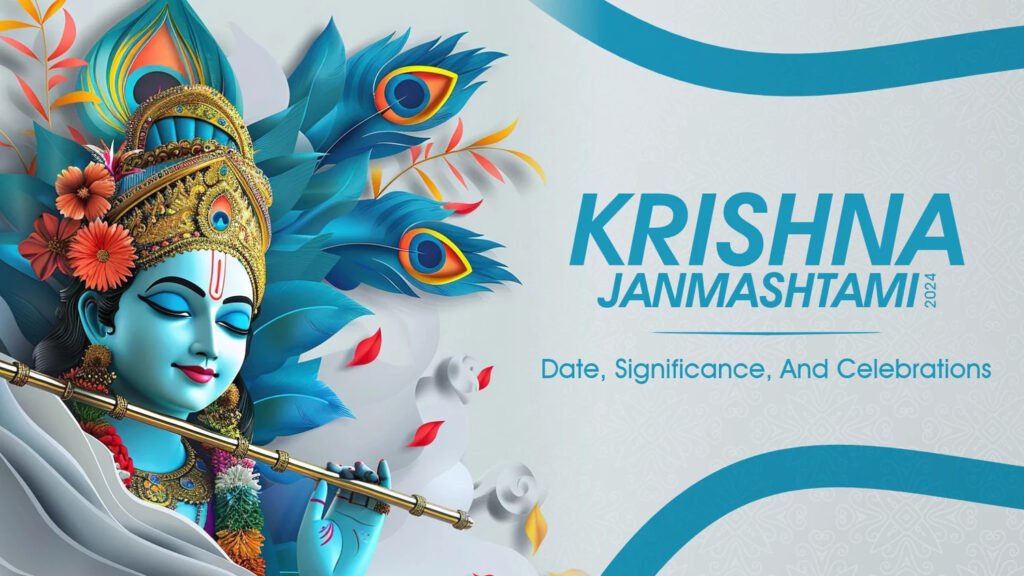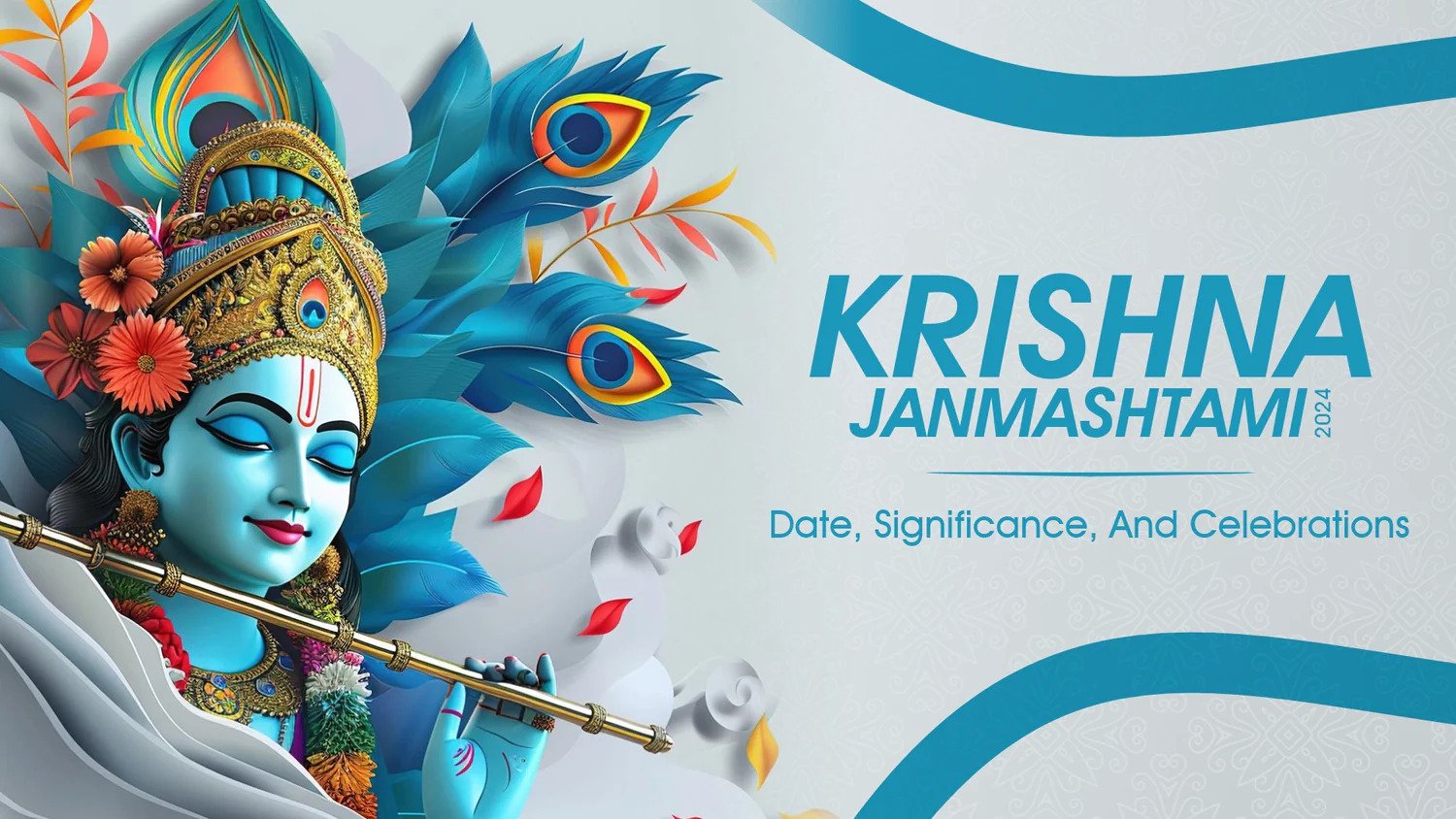Table of Contents
ToggleTop 10 Amazing and Lesser-Known Facts About Janmashtami
The Hindu holiday of Janmashtami, sometimes called Krishna Janmashtami or Gokulashtami, commemorates the birth of Lord Krishna, the eighth incarnation of Lord Vishnu. On the eighth day, or Ashtami, of the Krishna Paksha, or dark fortnight, in the Hindu month of Bhadrapada, which usually occurs in August or September, people celebrate this auspicious occasion.

The ultimate deity, Lord Krishna, is regarded as the embodiment of wisdom, love, and compassion. It is thought that he was born in Mathura, India, more than 5,000 years ago, under unusual circumstances. Hindu texts state that Devaki and Vasudeva, who were being held captive by Devaki’s brother, the despot King Kansa, gave birth to Krishna in a jail cell.
Krishna’s birth was greeted with excitement and optimism despite the unfavorable circumstances, since it was predicted that he would put a stop to Kansa’s horror.
Janmashtami is widely observed in Hindu communities globally and throughout India. In particular, the “Dahi Handi” event, where teams try to smash a pot of curd held high in the air, reflecting Krishna’s playful personality, is one of the many devotional activities performed by devotees. They also observe fasting and sing devotional songs.
Temples are exquisitely decorated, and offerings of fruits, sweets, and butter—Krishna’s favorite food—are made to the idol of the infant Krishna, who is frequently cradled in a crib. In celebration of the glorious entrance of the lord, followers do special prayers and rituals at midnight, which is thought to be the hour of Krishna’s birth.
In addition to commemorating the birth of Krishna, Janmashtami serves as a reminder of his teachings, which place a strong emphasis on duty, morality, and devotion. People come together on this day of happy celebration and introspection, bonded by their shared faith and love to Lord Krishna.
Here’s top 10 amazing and lesser-known facts about Janmashtami
1. The Astronomical Significance of Janmashtami
According to the Hindu lunar calendar, Janmashtami is observed on the eighth day, or Ashtami, of the Krishna Paksha, or dark fortnight, in the month of Bhadrapada. This date is especially noteworthy since it coincides with some astronomical phenomena.
The celebration often takes place in August or September, which is the height of India’s monsoon season. The earth is thought to have been purified by the severe rains in preparation for the birth of Krishna, who is revered as the world’s preserver. Furthermore, Janmashtami frequently falls under the Rohini Nakshatra, the star believed to be the birthplace of Krishna, lending the festivities a cosmic feel.
2. The Connection Between Janmashtami and Dwaraka
While Janmashtami is celebrated widely throughout India, devotees of Krishna have a particular place in their hearts for the Gujarati city of Dwaraka. Hindu texts state that Lord Krishna founded the kingdom of Dwaraka after departing from Mathura.
Today, the city is home to the renowned Dwarkadhish Temple, where Janmashtami is observed with a grandeur never seen before. Thousands of devotees travel to Dwaraka to take part in the colorful celebrations that envelop the city, observe the intricate rituals, and hear lectures about the life of Krishna. The celebrations of Janmashtami here have a special spiritual importance because it is thought that Krishna still stays in Dwaraka.
3. The Influence of Janmashtami on Indian Classical Dance and Music
In addition to being a revered religious figure, Lord Krishna is also a cultural icon who has influenced innumerable musical, dance, and artistic creations. Particularly Janmashtami has had a significant impact on Indian classical dance styles like Kathak, Odissi, and Bharatanatyam. These dance forms frequently represent events from the life of Krishna, like the lifting of Govardhan Hill and the Raas Leela, the holy dance with the Gopis.
In the same vein, Krishna’s lighthearted and devotional qualities are widely celebrated in Indian classical music. One indication of the close ties between the celebration of Janmashtami and the classical arts is the custom of singing Krishna bhajans, or devotional songs.
4. The Global Celebration of Janmashtami
Although Janmashtami is mostly an Indian holiday, people celebrate it across the subcontinent. Janmashtami has gained international recognition due to the growth of the Indian diaspora and the appeal of the International Society for Krishna Consciousness (ISKCON). Large-scale Janmashtami celebrations are held in nations including the United States, the United Kingdom, Canada, Australia, and South Africa.
These celebrations include customary rites, cultural events, and communal feasts. The celebration of the festival is celebrated in places like London and New York with large processions and open gatherings that attract people from a wide range of ethnic backgrounds, symbolizing the universal appeal of Krishna’s teachings.

5. The Symbolism of the Dahi Handi Ritual
The Dahi Handi rite, in which groups of young men construct human pyramids to smash a clay pot laden with curd, butter, and other delights, is one of the most famous and whimsical features of Janmashtami. The youthful adventures of Krishna, who was well-known for his affection for butter and his naughty attempts to pilfer it from the Gopis’ pots (cowherd ladies), served as the model for this rite. But dahi handi has deeper symbolic importance than just being a pleasant craft.
The butter within the pot is a representation of the soul, while the pot itself represents the human ego. In line with Krishna’s spiritual teachings, breaking the pot represents the destruction of the ego and the deliverance of the soul.
6. The Fast and Its Significance
A major component of Janmashtami, which is celebrated by millions of followers as a means of body and mental purification, is fasting. The “Upavasa” fast usually lasts until midnight, which is considered to be the hour that Krishna is said to have been born. Some adherents follow an intense waterless fast, whereas others are allowed to eat fruits, milk, and nuts.
Fasting is a spiritual practice that helps devotees focus their thoughts on Krishna and develop a sense of detachment from worldly wants. It is not merely a physical discipline. A joyful event, the breaking of the fast at midnight signifies the entrance of heavenly grace into the lives of followers.
7. The Unique Janmashtami Celebrations in Mathura and Vrindavan
The focal points of India’s Janmashtami celebrations are Mathura and Vrindavan, the birthplace and childhood abodes of Lord Krishna. The Krishna Janmabhoomi Temple in Mathura becomes the center of the celebrations, complete with intricate ceremonies, devotional chants, and life-size recreations of Krishna’s experiences.
On the flip side, Vrindavan is well-known for its energetic Raas Leela performances, which tell the tale of Krishna and Radha, the holy couple. The sound of bhajans, the aroma of flowers, and the sight of exquisitely adorned temples enliven the entire area. The celebration of Janmashtami in these cities is made all the more memorable by the unique fusion of devotion, culture, and history.
8. The Historical Origins of Janmashtami
The origins of the Janmashtami celebration can be traced back thousands of years, to the texts of the ancient Hindu texts Harivamsa, Vishnu Purana, and Bhagavata Purana. The stories of Krishna’s conception, his divine play (Leela), and his part in the Mahabharata are told in these writings.
The celebration of Janmashtami has grown over time into a significant holiday with regional differences. The celebration has also been impacted by a number of Bhakti (devotional) movements, especially during the Middle Ages when poets and saints like Chaitanya Mahaprabhu, Surdas, and Meera Bai wrote songs and hymns honoring Krishna, which helped to popularize the celebration.

9. The Role of Women in Janmashtami Celebrations
Janmashtami is celebrated mostly by women, both in the home and at public gatherings. For the midnight puja (religious worship), women traditionally prepare extravagant offerings of candies, fruits, and other delights. They also use oil lamps, flowers, and rangoli—bright floor designs—to adorn their dwellings.
Women engage in religious singing and dancing throughout much of India, frequently gathering in groups to sing Krishna bhajans. Women actively participate in the Dahi Handi event, where they create their own teams and compete in breaking the pot, in states like Maharashtra and Gujarat. Women’s active engagement in Janmashtami celebrates the festival’s inclusive and community-focused aspects.
10. The Environmental Awareness Associated with Janmashtami
The celebration of Janmashtami has expanded to include an environmental awareness campaign in recent years. Many temples and communities have embraced environmentally friendly customs, like making rangoli with natural colors, eschewing plastic ornaments, and preparing prasad (offering) using organic materials.
Krishna’s teachings are firmly anchored in the idea of living in harmony with nature, as evidenced by his early adventures in the forests of Vrindavan and his raising of the Govardhan Hill to shield the locals from deluges of rain. Through the integration of environmental awareness into Janmashtami festivities, followers of Krishna are simultaneously paying tribute to the planet and conserving it for posterity.
Conclusion
The holiday of Janmashtami is celebrated by people of different religions and cultures, and it offers a diverse range of customs, tales, and moral lessons. Janmashtami is a celebration that unites devotion, tradition, and community—from its astronomical significance to its effect on art and music, from the whimsical Dahi Handi to the deep act of fasting.
We can better comprehend the celebration and the enduring legacy of Lord Krishna—whose teachings continue to inspire millions of people worldwide—by delving into these lesser-known facts.
Janmashtami is an exceptional chance to engage with the ageless wisdom of the Bhagavad Gita and the happy energy of Krishna’s life, regardless of your interest in Indian culture or devotion.


